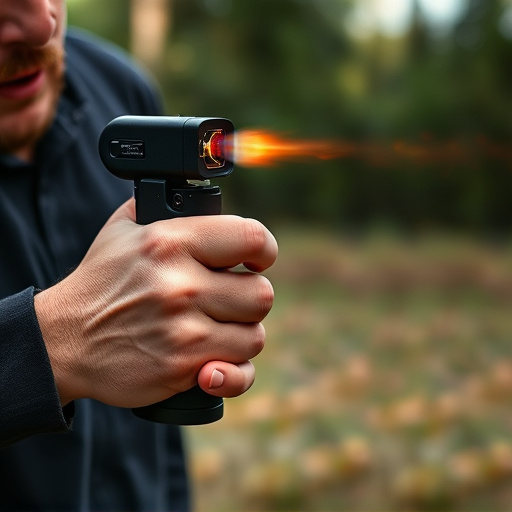Riot control agents, particularly pepper spray, are essential tools for law enforcement but their effectiveness is highly variable across different climates. Dry weather conditions prolong the impact of pepper spray, while humid or cold environments can dilute or hinder its deployment. Agencies must consider local climate conditions when stocking and deploying these agents, provide tailored training based on varying conditions, and factor in environmental factors like wind patterns and sand/dust to ensure reliable riot control strategies.
Riot control agents, such as pepper spray, have become integral tools for law enforcement worldwide. This comprehensive overview explores the science behind these powerful substances, delving into their effectiveness and variability. We examine how environmental factors in different climates impact agent performance, providing crucial insights for officers on the ground. Understanding these dynamics is essential to ensure safe and strategic use of riot control agents in diverse tactical scenarios.
- Understanding Riot Control Agents: A Comprehensive Overview
- The Science Behind Pepper Spray: Effectiveness and Variability
- Climate Considerations: How Environmental Factors Impact Agent Performance
Understanding Riot Control Agents: A Comprehensive Overview
Riot control agents, also known as less-lethal weapons, are chemical compounds designed to incapacitate or disorient individuals without causing permanent harm. These agents play a significant role in law enforcement, particularly during civil disturbances and mass gatherings. Understanding their effectiveness across different climates is crucial for optimal deployment. Pepper spray, one of the most common types, has been proven highly effective against rioters due to its ability to irritate eyes, making it difficult for them to see and breathe.
However, the performance of riot control agents varies with environmental conditions. In extreme cold or heat, these chemicals can either evaporate too quickly or become less potent. For instance, pepper spray’s effectiveness might decrease in humid climates as it dilutes faster. Conversely, dry weather conditions can make the spray particles linger longer in the air. Thus, law enforcement agencies must consider local climate when stocking and deploying riot control agents to ensure maximum efficacy during operational requirements.
The Science Behind Pepper Spray: Effectiveness and Variability
Pepper spray, a common riot control agent, has become an integral part of law enforcement strategies worldwide. Its effectiveness lies in its ability to temporarily incapacitate individuals by causing severe irritation and pain to the eyes and respiratory system. The active ingredient, capsaicin, is derived from chili peppers, making it a natural yet potent substance.
However, the effectiveness of pepper spray can vary significantly based on different climates and environmental conditions. In dry, hot weather, pepper spray tends to be more potent as it evaporates quickly, allowing for a faster reaction time. Conversely, in humid or cold environments, its potency may diminish due to slower evaporation rates. These variables underscore the importance of proper training for law enforcement officers in diverse tactical scenarios, ensuring optimal use and safety during riot control operations.
Climate Considerations: How Environmental Factors Impact Agent Performance
In various climates, the effectiveness of pepper spray can vary significantly due to environmental factors. For instance, in humid conditions, the spray’s potency might decrease as moisture can dilute its active ingredients, reducing its impact on suspects. Conversely, colder temperatures can affect both the user and the target; it may be harder for officers to deploy the spray effectively due to frozen triggers or reduced visibility, while cold air can also cause the pepper spray to spread more widely, potentially affecting bystanders.
Additionally, wind patterns play a crucial role in pepper spray performance. Strong winds can carry the spray away from its intended target, reducing its effectiveness. In desert environments, sand and dust particles can interact with the spray, altering its chemical composition and causing it to wear off faster. These climate considerations are vital for law enforcement agencies to understand as they strategize riot control, ensuring that their chosen agents remain reliable in diverse and dynamic scenarios.
Riot control agents, with pepper spray at their forefront, are powerful tools for law enforcement in managing civil unrest. Understanding their effectiveness and variability, as well as environmental impact, is crucial for optimal deployment. In different climates, the performance of these agents can vary significantly, affecting their ability to disrupt and disperse crowds. By considering these factors, law enforcement agencies can make informed decisions to ensure public safety and maintain order during challenging situations. The science behind pepper spray effectiveness in various environments remains a dynamic field, with ongoing research crucial for staying ahead in riot control strategies.
